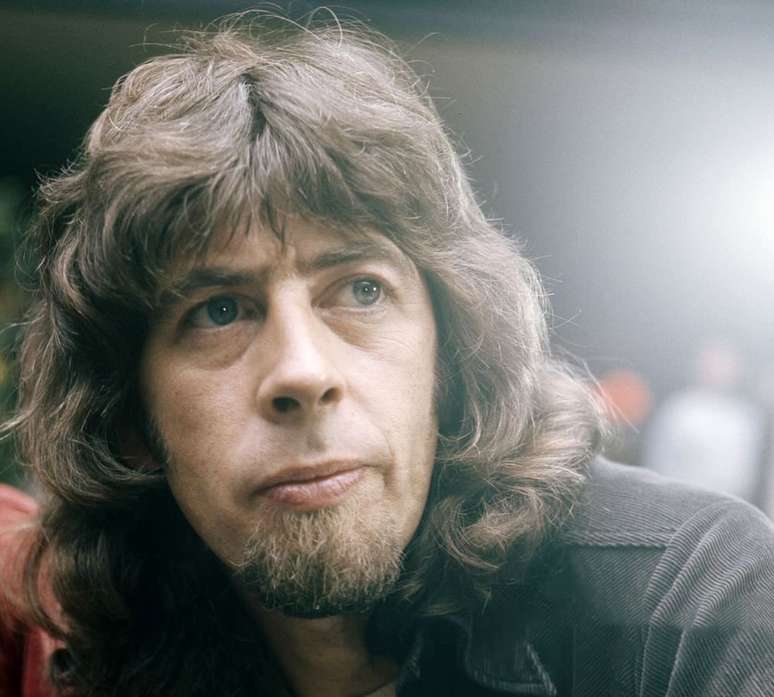The singer’s band included guitarists Eric Clapton and Mick Taylor of the Rolling Stones, as well as three members of Fleetwood Mac
Singer and guitarist John Mayall, known as the “godfather of British blues,” died Monday (7/22) at his home in California at the age of 90. His family announced his death on social media, citing recent health issues.
60’s Blues School
A central figure in the British blues revival movement, Mayall was heavily influenced by American bluesists, but the American pioneers themselves claimed to owe the musical recognition of the blues to the efforts of the English artist, who devoted his life to keeping the genre alive. “John Mayall, he was the master of the blues,” said BB King, emphasizing the artist’s importance in the 1960s.
Indeed, Mayall influenced generations of musicians with his band, the Bluesbreakers, formed in 1963, which included legendary rock names such as Eric Clapton, Peter Green, Mick Taylor, Jack Bruce, John McVie, Mick Fleetwood and Aynsley Dunbar.
Known for his generous leadership style, the singer has always given his musicians the space to shine. “The reason I choose musicians is what they bring to the table and I like their work. I want to give them the opportunity to express themselves,” he said in a 2016 interview.
The famous disciples
Eric Clapton, who joined the Bluesbreakers in 1965 after leaving the Yardbirds, found the band a conducive environment to explore his passion for the blues. The 1966 album “Blues Breakers with Eric Clapton”, also known as “Beano”, is considered one of the high points of British blues.
It was in the Bluesbreakers that Clapton met bassist Jack Bruce, who joined the band in 1965, following the temporary departure of founder John McVie due to alcohol problems. Bruce played with the Bluesbreakers for only a few months before being invited to join Manfred Mann and then Clapton to form Cream with drummer Ginger Baker.
Clapton also had a brief stint and was replaced shortly thereafter by Peter Green, who also had an impact on the band with his exceptional guitar skills. Green shined on the 1967 album “A Hard Road” before forming Fleetwood Mac with other former Bluesbreakers members such as drummer Mick Fleetwood and John McVie. All three have always acknowledged Mayall’s importance in their careers.
The heir to the House of Green was another legend. Mick Taylor was recruited at just 18 years old and appeared on four of the band’s albums between 1967 and 1969. He left the Bluebreakers to join the Rolling Stones, taking over for the late Brian Jones. His time with the Stones in the early 1970s is remembered as one of the band’s most creative phases.
For years, John Mayall’s band remained a launching pad for new artists. Many other musicians who passed through the Bluesbreakers went on to major careers in their own right. Saxophonist Dick Heckstall-Smith, bassist Tony Reeves, and drummer Jon Hiseman founded the jazz-rock group Coliseum. Acoustic guitarist Jon Mark and flutist-saxophonist Johnny Almond formed their own unit, Mark-Almond.
It was during the Mark-Almond era that Mayall released his best-known American single, “Room to Move.” The live album from which the song was taken, “The Turning Point” (1969), was the only Bluesbreakers LP to achieve gold status.
Blues in the 70s and 80s
In the early 1970s, Mayall moved to Los Angeles, where he worked with several prominent American blues musicians, including guitarist Harvey Mandel, fiddler Don “Sugarcane” Harris, and bassist Larry Taylor. The 1970 album “USA Union”, which featured this lineup, reached #22 on the Billboard album charts, the biggest success of the English artist’s career.
Mayall celebrated busier shows during that period, which were only surpassed in 1982, when he reunited with Mick Taylor and John McVie for an extensive world tour.
A new version of the Bluesbreakers, released in 1984, featured a two-guitar lineup with Coco Montoya and Walter Trout, and marked a revival of interest in Mayall, celebrated with a major-label deal with Silvertone Records, the American record label that revitalized his career. .by Buddy Guy.
The last years and the legacy
The musician kicked off the new millennium with a star-studded album, “Along for the Ride,” and a 70th birthday concert in Liverpool that saw Clapton and Taylor play together in the Bluebreakers for the first time. Since then, Mayall has added other renowned guitarists to the band, including Sonny Landreth, Robben Ford and Carolyn Wonderland.
He has remained active in recent years, releasing albums and touring well into his 80s. In 2019, he released “Nobody Told Me,” which featured big names like Todd Rundgren and Joe Bonamassa. His latest album, “The Sun Is Shining Down,” was released in 2022 to critical acclaim and was nominated for a Grammy for Best Traditional Blues Album.
When he was announced as one of this year’s Rock and Roll Hall of Fame inductees, his social media reflected his delight: “John Mayall is delighted to be inducted into the Hall alongside Alexis Korner, who in 1963 suggested that you could make a living playing the blues in London.”
Now, the musician will be honored posthumously in October by the Rock and Roll Hall of Fame, with the Musical Influence Award, along with two other deceased blues artists, his friend Alexis Korner (1928-1984) and pioneer Big Mama Thornton (1926-1984). Many artists have paid tribute to his legacy, including the Hall of Famer himself: “John Mayall was a pioneer who kept the blues alive and relevant. His contributions to music will be remembered forever.”
Source: Terra
Rose James is a Gossipify movie and series reviewer known for her in-depth analysis and unique perspective on the latest releases. With a background in film studies, she provides engaging and informative reviews, and keeps readers up to date with industry trends and emerging talents.








